Understanding Clean Beauty Standards and What They Mean for You
flareAI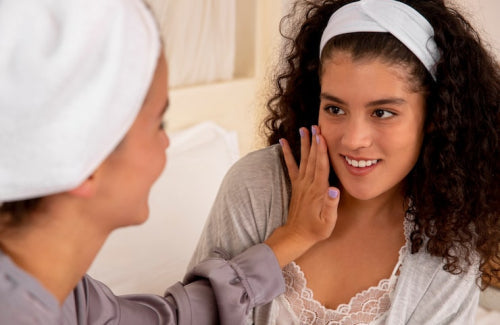
Quick Listen:
Picture this: You're navigating the fluorescent-lit maze of a cosmetics aisle, bombarded by shelves groaning under the weight of serums promising eternal youth, foundations that vow flawless coverage, and lipsticks in shades that defy description. Each bottle whispers temptations "natural," "organic," "clean" but in the rush of decision-making, doubt creeps in. What exactly makes a product "clean"? Is it a genuine safeguard against the hidden hazards lurking in your beauty routine, or just savvy marketing? In an era where consumers wield unprecedented power through social media scrutiny and regulatory shifts, the clean beauty movement isn't merely a fad; it's a reckoning. With the global market surging toward unprecedented heights, understanding these standards has never been more essential for safeguarding your health, the environment, and even your wallet. Let's dive deep into the heart of clean beauty, demystifying its principles and exploring how they reshape our daily rituals.
Many women feel trapped by makeup that hides flaws but risks irritation and hidden toxins. This daily choice weighs heavily, dimming confidence over time. Liht Organics invites you to embrace beauty differently. With up to 90% USDA-certified organic ingredients, our vegan, cruelty-free products deliver vibrant color and gentle care, letting you glow with confidence, knowing your skin is nurtured, not compromised. Shop Now!
What Defines Clean Beauty in Today's Landscape?
Clean beauty transcends superficial labels; it's a rigorous ethos rooted in safety, transparency, and sustainability. At its core, it demands products devoid of toxins that could disrupt hormones, trigger allergies, or pollute waterways think heavy metals like lead and arsenic, or "forever chemicals" such as PFAS that linger in waterproof mascaras and foundations. Unlike the patchwork of U.S. regulations, where the FDA mandates no pre-market safety testing for most cosmetics and bans only 11 substances compared to the European Union's 1,378, clean beauty brands voluntarily elevate the bar. They prioritize plant-derived ingredients with verifiable safety profiles, clear labeling that demystifies formulations, and eco-conscious packaging that biodegrades without a trace.
This commitment resonates profoundly with brands like Liht Organics, whose organic makeup line exemplifies the movement's ideals. By eschewing synthetic fillers and petroleum derivatives, their products not only nourish the skin but also align with a wellness philosophy that treats beauty as an extension of holistic health. The proof is in the numbers: According to Grand View Research's latest analysis, the global clean beauty market hit USD 9.28 billion in 2024, up from 8.25 billion the prior year, and is on track to reach 21.29 billion by 2030 at a robust 14.8% compound annual growth rate. This explosion stems from escalating consumer anxieties over harmful additives, amplified by reports of 396 annual adverse events to the FDA from 2004 to 2016 a figure that underscores the urgency for change.
Yet clean beauty isn't synonymous with "natural" or "organic," though overlap exists. As defined by industry experts, it's about green formulations that shield facial skin from chemical assaults, backed by transparent ingredient disclosures. For Liht Organics, this means harnessing the "magic" of botanicals to craft foundations yielding that enviable dewy finish or glosses striking the ideal sheen without stickiness minus the endocrine disruptors like parabens and phthalates that conventional counterparts often harbor.
Trends Propelling the Clean Beauty Revolution Forward
The clean beauty surge feels unstoppable, fueled by a confluence of cultural, technological, and regulatory tailwinds. Younger demographics, particularly Gen Z, are at the vanguard, leveraging platforms like TikTok and Instagram to champion cruelty-free, vegan imperatives. Social media influencers, targeting impressionable teens with tailored solutions for acne-prone skin or unruly curls, have democratized access to knowledge yet they've also spotlighted the perils of unverified "eco-friendly" boasts in overcrowded aisles.
Regionally, Asia-Pacific dominates, capturing 30.62% of the market in 2024 and poised for a 12.52% CAGR through 2030, per Mordor Intelligence. Here, youthful populations in India prioritize ingredient purity, while Japan and South Korea innovate premium, biotech-fermented actives. Globally, the market is forecasted to balloon from 163.35 billion in 2025 to 264.55 billion by 2030 at 10.12% CAGR, propelled by demands for ethical sourcing and supply chain resilience.
Regulatory evolution adds momentum. The 2022 Modernization of Cosmetics Regulation Act (MoCRA) empowers the FDA with mandatory adverse event reporting within 15 days, Good Manufacturing Practices enforcement, and recall authority though it stops short of defining "clean" or curbing toxins outright. States like California are bolder, with a 2025 bill prohibiting 25 hazardous ingredients, potentially setting a national precedent. Meanwhile, "greenwashing" persists as a thorn, prompting certifications like USDA Organic and Leaping Bunny to shine as beacons of authenticity. Innovations abound: refillable palettes curbing waste, algae-infused hydrators rivaling silicones, and fermented ingredients boosting efficacy without compromise. For savvy consumers, these trends signal a marketplace where performance meets planetary stewardship.
Case Studies: Clean Beauty Delivering Tangible Results
Beyond abstractions, clean beauty shines in practice, with Liht Organics emerging as a beacon. Their organic foundations, bereft of pore-clogging synthetics, offer luminous coverage that soothes rather than inflames ideal for those battling rosacea or sensitivity. Users report transformative shifts: reduced flare-ups, lighter feels, and an unburdened conscience, knowing their routine spares aquatic life from phthalate runoff.
Skincare leads the charge, commanding 41.70% of 2023 revenues and 34.53% in 2024, thanks to serums blending chamomile and aloe for anti-aging prowess minus irritants. Women, driving 83.63% of demand, flock to these for empowerment through informed choices. Specialty stores, holding 35.67% share, curate these gems, while online channels surge at 15.7% CAGR, per Grand View. Real anecdotes abound: One devotee credits clean switches for taming chronic breakouts, echoing broader testimonials of vitality reclaimed. In makeup, color cosmetics grow at 12.37% CAGR, blending vibrancy with virtue proof that clean doesn't dilute dazzle.
Broader successes include retailer pivots: Sephora's "Planet Aware" seal responds to scrutiny, while celebrities like Kim Kardashian retool lines for sustainability. These narratives affirm clean beauty's viability, turning skeptics into advocates and fortifying a sector where efficacy and ethics coexist seamlessly.
Overcoming Obstacles in the Pursuit of Purity
No revolution lacks friction, and clean beauty grapples with formidable barriers. Sourcing pristine botanicals inflates costs, as InsightAce Analytic highlights: Valued at 8.1 billion in 2024, the market eyes 33.2 billion by 2034 at 15.2% CAGR, yet production premiums deter mass adoption. E-commerce mitigates this in hubs like the U.S. and China, but accessibility lags for budget-conscious buyers.
Regulatory ambiguity exacerbates woes. Lacking a unified "clean" lexicon, the industry navigates a certification labyrinth, where over 70% of shoppers now dissect labels pre-purchase. The 2022 Sephora lawsuit, alleging synthetic interlopers in "Clean at Sephora" products, exemplifies fallout Vogue Business chronicled the ensuing class-action wave and social media uproar, urging brands to refine rhetoric. Balancing sparkle in lip gloss with non-toxicity demands alchemy, often at efficacy's expense.
COVID-19's shadow lingers too, disrupting supply chains and R&D, though rising investments now spur innovation. For Liht Organics, these hurdles forge resilience, prioritizing transparency to cultivate loyalty amid confusion.
Seizing Opportunities in a Greener Horizon
Challenges notwithstanding, clean beauty brims with promise. North America's 35.08% 2023 stake, with the U.S. at 14.5% CAGR, underscores ripe terrain for trailblazers. Brands embracing third-party validations and compostable packaging think kid's segments growing 13.81% reap loyalty dividends. Premium lines, at 12.01% CAGR, cater to adults (89.32% share) craving bespoke, biotech-enhanced luxuries.
Liht Organics thrives by niching in organics, differentiating via unyielding purity. As health stores claim 36.21% and online 12.43% CAGR, digital storytelling amplifies reach. Envision mascara tubes dissolving harmlessly, serums customized sans synthetics this vista beckons, driven by celebrity endorsements and e-commerce booms. For enterprises, it's a clarion: Innovate boldly, or fade into obscurity.
Government nods, like ASEAN's 2024 directives, harmonize standards, while MoCRA's teeth deter malfeasance. Ultimately, opportunity lies in consumer agency your scrutiny propels progress.
Charting a Sustainable Path Ahead
The clean beauty odyssey redefines cosmetics as a covenant of care for self, society, and sphere. From California's vanguard bans to federal whispers like the stalled Safe Cosmetics Act, momentum builds toward equity. Experts foresee a decade of lab-grown actives and zero-waste paradigms, with markets like mass (62.17% share) evolving inclusively.
Brands like Liht Organics illuminate the way, proving beauty's bloom needn't blight. As you next peruse that aisle, arm yourself: Probe labels, seek seals, champion transparency. In this empowered epoch, clean isn't aspiration it's imperative, a pledge to thrive vibrantly, verdantly, victoriously. Your routine, refined, radiates responsibility.
Frequently Asked Questions
How can I identify truly clean beauty products and avoid greenwashing?
Look for third-party certifications like USDA Organic and Leaping Bunny, which serve as authentic markers of clean beauty standards. Read ingredient labels carefully over 70% of shoppers now scrutinize labels before purchasing and avoid products containing parabens, phthalates, sulfates, and synthetic fragrances. Be wary of vague terms like "eco-friendly" without backing certifications, as greenwashing remains common in the industry. Research brand's transparency practices and look for companies that provide detailed ingredient sourcing information and safety testing data.
Why is the clean beauty market growing so rapidly and what's driving consumer demand?
The global clean beauty market exploded from $8.25 billion in 2023 to $9.28 billion in 2024 and is projected to reach $21.29 billion by 2030, growing at 14.8% annually. This surge is driven by Gen Z consumers using social media to champion cruelty-free products, growing awareness of the 396 annual adverse cosmetic events reported to the FDA, and regulatory gaps where the U.S. only bans 11 substances compared to the EU's 1,378. Younger demographics are particularly concerned about ingredient purity and environmental impact, fueling demand for transparent, sustainable beauty options.
What exactly does "clean beauty" mean and how is it different from natural or organic products?
Clean beauty refers to products formulated without potentially harmful ingredients like heavy metals, PFAS chemicals, parabens, and phthalates that could disrupt hormones or cause allergic reactions. Unlike "natural" or "organic" labels, clean beauty focuses specifically on safety and transparency, requiring brands to voluntarily eliminate toxins and provide clear ingredient disclosure. While there's overlap with natural products, clean beauty prioritizes green formulations that protect your skin from chemical exposure, regardless of whether ingredients are plant-derived or synthetically made safe.
Disclaimer: The above helpful resources content contains personal opinions and experiences. The information provided is for general knowledge and does not constitute professional advice.
You may also be interested in: Celebrating World Animal Day with Liht Organics: Embracing
Many women feel trapped by makeup that hides flaws but risks irritation and hidden toxins. This daily choice weighs heavily, dimming confidence over time. Liht Organics invites you to embrace beauty differently. With up to 90% USDA-certified organic ingredients, our vegan, cruelty-free products deliver vibrant color and gentle care, letting you glow with confidence, knowing your skin is nurtured, not compromised. Shop Now!
Powered by flareAI.co
Share
You May Also Like
-

Discovering Self-Love Through Clean Beauty: A Guide to Nurturing Your Inner and Outer Self
In the journey of self-love, every action, thought, and choice we make towards ourselves can be a powerful affirmatio...
-

The Science Behind Organic Makeup and Pregnancy: A Gentle Choice for Moms-to-Be
wp:paragraph Pregnancy is a wonderful and exciting journey that comes with added responsibilities of ensuring the ...
-
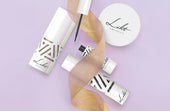
Liht Organics Black Friday: Enhance Your Beauty Routine with Vegan, Organic, and Natural Essentials!
As the holiday season approaches, there’s a sparkle in the air, and we at Liht Organics are thrilled to add a touch o...
-

Organic Makeup That Heals As It Conceals
Liht Organics Empowers Women With Only The Best For Their Beauty NeedsLiht Organics combines the best of both worlds:...
-
![[FEATURE] Liht Organics to debut at TFWA Asia Pacific show](//lihtorganics.com/cdn/shop/articles/1_1.png?v=1759328400&width=170)
[FEATURE] Liht Organics to debut at TFWA Asia Pacific show
‘Organic makeup that’s safe enough to eat’ — Liht Organics to debut at TFWA Asia Pacific show by Hannah Tan | 24 Apri...
-
![[FEATURE] The Singapore-based organic makeup brand is a first-time exhibitor at this year’s TFWA Asia Pacific Exhibition in Singapore in May 2025](//lihtorganics.com/cdn/shop/articles/2_1.png?v=1759328386&width=170)
[FEATURE] The Singapore-based organic makeup brand is a first-time exhibitor at this year’s TFWA Asia Pacific Exhibition in Singapore in May 2025
TFWA Asia Pacific preview: Liht Organics targets expansion in travel retail By DFNI Staff Writer The Singapore-bas...
-
![[FEATURE] Travel Retail Awards 2025 finalists - Best Make-up Product Color-Intense Liquid Lipstick – Liht Organics](//lihtorganics.com/cdn/shop/articles/4_e2f54f0f-fcd1-46e7-9990-fc9d29e35131.png?v=1759328382&width=170)
[FEATURE] Travel Retail Awards 2025 finalists - Best Make-up Product Color-Intense Liquid Lipstick – Liht Organics
Revealed: Travel Retail Awards 2025 finalists By Trbusiness Editor | Wednesday, 23 July 2025 15:21 TRBusiness is th...
-
![[FEATURE] Liht Organics targets expansion in travel retail](//lihtorganics.com/cdn/shop/articles/3_1.png?v=1759328346&width=170)
[FEATURE] Liht Organics targets expansion in travel retail
Organic makeup that’s safe enough to eat: Liht Organics targets expansion in travel retail By Laura Shirk Liht Organ...
-

[FEATURE] Gulf News: TikTok’s strawberry girl makeup trend: How to achieve that rosy glow inspired by Hailey Bieber
Berry, berry, strawberry, love strawberry, like BTS’s J-Hope, the band’s strawberry enthusiast once said. If only we ...
-

[FEATURE] Gulf Business Magazine : Liht-ing it up
Our founder, Nerissa Low was interviewed by Gulf Business, where she discussed her experience launching Liht, an orga...
-

[FEATURE] Daily Vanity: 11 local beauty brands owned by women – you’d be surprised how many of them started in their kitchens!
When we give a shout-out to homegrown beauty businesses, we aren’t just doing it for the sake of supporting local. Th...
-

[FEATURE] Entrepreneur ME : UAE-Based Liht Organics' Nerissa Low On Crafting An Organic Makeup Brand For The Skin-Conscious Consumer
As is the case with the origin stories of so many startups out there, Liht Organics came into being after its founder...
-
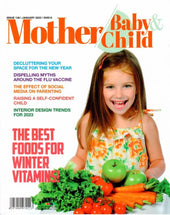
Mother, Baby & Child Editor’s Pick: Liht Organics Lights the Way
Excited to be the Mother, Baby & Child’s ‘Editors pick’ for their choice of Beauty brand.The article outlined the...
-
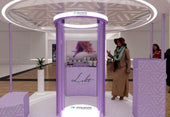
[FEATURE] EmiratesWoman - 8 Fabulous things to do in Dubai this weekend
by SARAH JOSEPHJANUARY 20, 2023Try the UAE’s first virtual reality makeup podium The popular VR-backed makeup exper...
-

Nerissa Low of Liht Organics On The Self-Care Routines & Practices Of Busy Entrepreneurs and Business Leaders
By Maria Angelova, CEO of Rebellious Intl.Date: 4 January, 2023Nerissa Low of Liht Organics On The Self-Care Routines...
-

Liht Organics: Meet the beauty brand that has caught the eye of the Royal Family of Bahrain
By Crystal Lee Digital Editor28 May 2021The world of clean beauty is, ironically, rather murky.That’s because the ter...
-

The latest luxury makeup and skincare drops, including serums, concealers, moisturisers and more
Allisa Noraini21 May, 2021It’s fine to splurge in the name of beauty. This new range of makeup and skincare drops are...
-

These SG Beauty Bosses Are Conquering The World Despite The Pandemic
First Singapore, then the US, China, Germany, Dubai, UK, South Korea, Malaysia, Hong Kong, Thailand, Australia… By...
-

Nerissa Low, Founder at Liht Organics
Written by Callum LaingPosted on December 26, 2020 10 min readNerissa Created Organic Makeup That Actually Improve...
-

Liht Organics – Makeup That Makes You
At Liht Organics, our mission is simple – to provide women (and men) with a safe experience when it comes to beauty s...
-

Why Should We Use Organic Makeup?
We cannot deny that cosmetics is one of our beauty essential item – it enhances our looks and conceals our flaws. Man...
-

Organic makeup and why your skin will love it: Liht Organics founder
By Jolene,July 27, 2020 |7 mins readOrganic make up in Singapore is a trend that is fast-catching on here as we becom...
-

[FEATURE] DC EDIT – Makeup & Confidence: Talking Self-love With Liht Organics’ Founder Nerissa Low
Makeup and confidence — the long, drawn-out fight that many of us have grappled with personally. I’m sure I’m not the...
-

[FEATURE] THE FEMALE CULTURE – I TRIED LIHT ORGANICS AND THIS IS HOW IT WENT
I’m a huge fan of makeup and I love testing out new products so I was pretty excited to get my hands on Liht Organics...
-

[FEATURE] SINGAPORE MOTHERHOOD – The Best Organic and Natural Skincare and Makeup for Pregnant and Breastfeeding Mums in Singapore
Pregnancy is a hormone-volatile period for women. One place where this makes itself seen and felt is on the skin. Som...
-

[FEATURE] AFTER CLINIC HOURS – 21 Back to Beauty Deals in Singapore (2020)
With spas and salons shuttered island wide for two months, I never thought I’d be this desperate for a good old’ Swed...
-

[FEATURE] KUL AL USRA MAGAZINE JUNE 2020
Choosing Pinks & Oranges this summer!Featured: Moisture Burst Lip Glaze in Pink Cupcake.
-
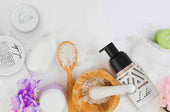
[FEATURE] Award-winning Organic Makeup Brand Liht Organics Gives Back to the Community & Environment During COVID-19
Singapore’s First Organic Makeup Brand with 100% Natural Makeup That Is Safe Enough to Eat Liht Organics promises org...
-

[FEATURE] COSMETICS DESIGN ASIA – COVID-19 ‘WAKE-UP CALL’: SINGAPORE’S LIHT ORGANICS SEES GLOBAL POTENTIAL AMID CLEAN BEAUTY CLAMOUR
Original article at: https://www.cosmeticsdesign-asia.com/Article/2020/06/26/Singapore-s-Liht-Organics-sees-globa...
-

[FEATURE] THE LIFESTYLE COLLECTIVE – BEAUTY SHOULD NEVER BE CRUEL
Date: June 24, 2020Author: Kristen Chen Liht (pronounced as light) Organics is a Singaporean organic makeup brand t...
-

[FEATURE] NÜYOU – 7 ONLINE PLATFORMS TO SHOP FOR CLEAN BEAUTY PRODUCTS
纯净美容(Clean Beauty)的美肤概念,再近几年来越来越受欢迎。随着消费者“爱自己”的美容意识逐步提升,对于用在脸上的所有物品、成分更为关注和讲究。以广义来讲,纯净美容主张使用“干净”成分和无毒配方,让肌肤的可能性损伤减到最小...
-

[FEATURE] COSMOPOLITAN MIDDLE EAST – 3 BENEFITS OF SWITCHING TO ORGANIC BEAUTY PRODUCTS THIS RAMADAN
By Cosmo – May 08, 2020Nerissa Low, founder of Liht Organics, shares the ultimate benefits of going organic this mont...
-

Nerissa Low of Liht Organics: “Seeing Light at the End of the Tunnel; 5 Reasons To Be Hopeful During this Corona Crisis”
Ely Weinschneider, Psy.D.May 8 · 9 min read …It shows us that everyone- whether we are rich or poor, regardless...
-

[FEATURE] AL MARA MAGAZINE APRIL 2020
-

[FEATURE] RetailME April 2020 – Liht Organics Stays Firm On Strengthening GCC Presence
-

[FEATURE] EMARAT AL YOUM NEWSPAPER – 27 MARCH 2020
English Translation:In spring and summer days, women love to have very light makeup in terms of color and texture, ...
-

[ARTICLE] WKND Magazine March 2020 – Know Your Organic Makeup
-

[FEATURE] AVIAMOST DUBAI – March/April 2020
English Translation:Lipstick with organic flowers. Thanks to the rich complex of natural ingredients, the lipstick...
-

[FEATURE] RUSSIAN EMIRATES (MAR/APR ISSUE)
Russian Emirates is a luxury lifestyle and fashion magazine covering information about the UAE, fashion, beauty, j...
-

[FEATURE] – KUL AL USRA MAGAZINE MARCH 2020
GET THE LOOK!
-

[FEATURE] IMAGES Retail ME – Liht Organics Announces GCC-Wide Expansion
Rupkatha Bhowmick Mar 10, 2020 The plan is to reach 75 Liht Organics retail touchpoints by June-July 2020 and touch...
-

[FEATURE] BABY & CHILD SPRING 2020 – NATURAL BEAUTIES
-

[FEATURE] AWQAT DUBAI – Liht Organics: The First Premium Organic Makeup Brand
ENGLISH TRANSLATION:Liht Organics – The First Premium Organic Makeup Brand Liht Organics, a premium organic beauty ...
-

[FEATURE] FRIDAY MAGAZINE – THE RETRO EYELINER LOOK
-

[FEATURE] MOTHER BABY & CHILD – VANITY ESSENTIALS – THE BEAUTY EDIT
-

[FEATURE] Masala! Magazine February/March 2020 Issue – Beauty Debut: Liht Organics
-

[Feature] – TimeOut Singapore – The Best Local Beauty and Skincare Brands In Singapore
For full article, click here.
-

[FEATURE] KUL AL USRA MAGAZINE – LIHT UP YOUR WORLD WITH LIHT ORGANICS
[ENGLISH TRANSLATION]Liht Up Your World With Liht OrganicsThe First Premium Organic Makeup Brand To Debut In The Mi...
-

[FEATURE] SINGAPORE TATLER – 9 Local Beauty Brands You Should Know Of
-

[FEATURE] nüyou August 2019 Issue – 15 Faces To Watch
-

[FEATURE] HONEYCOMBERS – Local Beauty Gurus: Singapore Beauty Brands You Need To Know About
-

[FEATURE] The Wellness Insider – Seeing The Liht With Founder Nerissa Low
-

[FEATURE] 联合早报 (LianHeZaoBao) – Women Entrepreneur Awards 2019 Coverage
-

[FEATURE] THE STRAITS TIMES Life – Clean beauty with a Singapore heart
-

Romantic Organic Makeup Looks for Valentine's Day: Tips, Tricks, and Product Picks
Valentine's Day is the perfect occasion to embrace the beauty of organic makeup. At Liht Organics, we believe in the ...
-
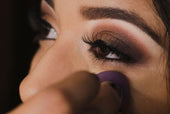
Enhance Your Eyes: A Guide to Eyeliner for Every Eye Shape with Liht Organics
Welcome to the Liht Organics blog, where we believe in celebrating the natural beauty of every eye shape. Today, we'r...
-
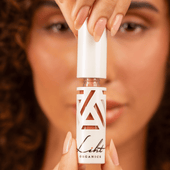
How to do makeup with only lipstick?
At Liht Organics, we believe in the power of clean beauty and the artistry of makeup. Makeup is more than just enhanc...
-

How to Clean Your Makeup Brushes in 6 Simple Steps
Cleaning your makeup brushes may seem like a tedious task, but it's an essential part of your beauty routine. Not onl...
-

Makeup Tips to Help You Look Your Most Flattering on Virtual Meetings!
After more than 2 years of work-from-home arrangement, and possibly hundreds of zoom calls and Google meet virtual me...
-
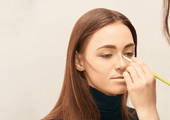
Learn How to Contour with This Simple Guide for Beginners
Want to take your makeup to the next level? Try contouring to achieve a more defined or sculpted look à la the Kardas...
-
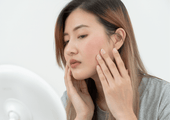
Essential and Easy Makeup Tips for Sensitive Skin
Living with sensitive skin conditions like eczema, psoriasis, and more is already not an easy feat. Throw in makeup t...
-
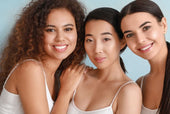
Raising Your Vibration: A Liht Organics Guide for Empowerment This International Women's Day
wp:paragraph As International Women's Day (IWD) approaches, it serves as a powerful reminder of the journey towards s...
-

The Beauty of Going Bare: Why Sleeping with Makeup is a No-No
Have you ever had one of those nights where you're too tired to clean off your makeup? You might believe, "Skipping...
-

Breast Cancer Awareness: Empower Your Beauty with Liht Organics Makeup
During October, we observe Breast Cancer Awareness Month as a way to unite and bring attention to breast cancer whil...
-

The Hidden Dangers of Carmine in Makeup Colorants: Embracing Healthier and Vegan Options
Makeup has become an integral part of our daily routines, allowing us to express our unique beauty. However, as we pr...
-

How can I ensure that my makeup products are organic and won't harm my skin?
When it comes to makeup, it’s important to be mindful of what you’re putting on your skin. With so many products on t...
-
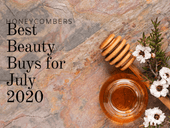
[FEATURE] HONEYCOMBERS – BEST BEAUTY BUYS IN JULY
by Nicole NithiyahWhat’s hot in our beauty hit list: Honest thoughts and top beauty stories we’re swooning over. As w...
-

Liht Organics Introduces Exclusive Gift Sets: Enhance Your Beauty This Festive Season!
As the holiday season approaches and the year draws to a close, Liht Organics is thrilled to present two enchanting g...
-

Get Spooktacular with the Best Halloween Makeup Ideas using Liht Organics' All-Natural, Vegan, and Cruelty-Free Cosmetics!
With Halloween just around the corner, it’s time to let your creativity shine and transform yourself into a spooky,...
-

Celebrating World Animal Day with Liht Organics: Embracing Natural Cruelty-Free Makeup
wp:paragraph As we observe World Animal Day, the team at Liht Organics takes great pride in honoring our pledge to...
-
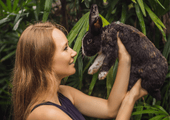
Reasons Why You Should Choose Cruelty-Free Cosmetics Instead!
With increasing exposés unveiling the ugly truth behind animal testing that goes on in the beauty industry, it is lit...
-

Celebrate Singles Day with Makeup That Empowers – 22% Off at LIHT Organics!
This Singles Day, treat yourself to beauty that goes beyond skin-deep. At LIHT Organics, we believe makeup is about s...
-

Preparing for the Cozy Beauty of Autumn: A Preview of Your Fall Look
As we bid farewell to the warm, sun-kissed days of summer, it’s never too early to start dreaming about the enchantin...
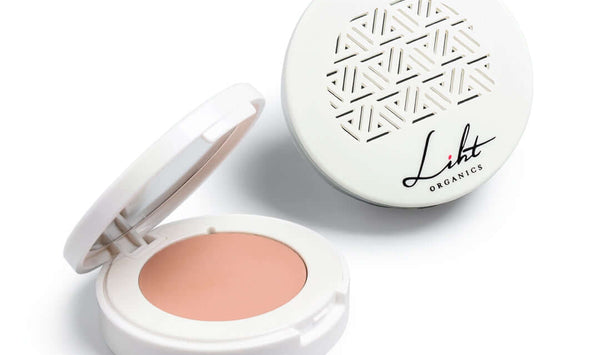
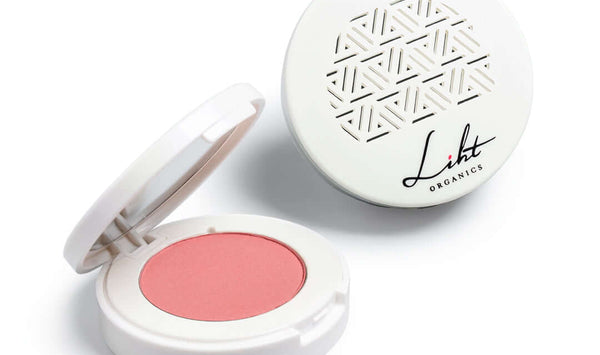
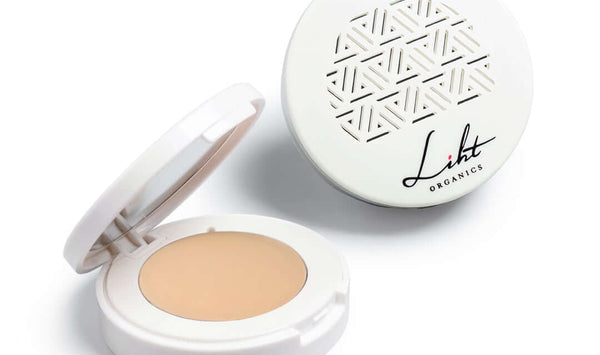
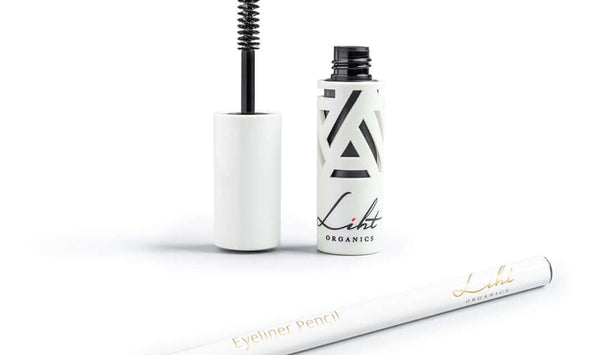
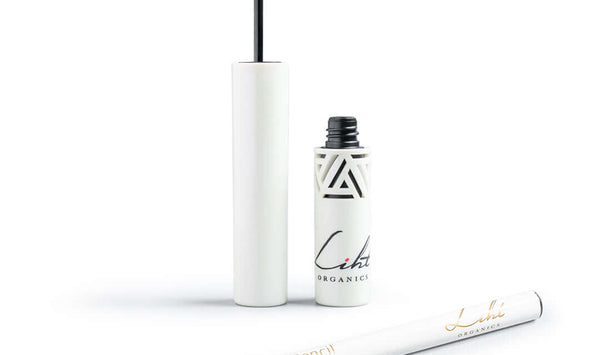
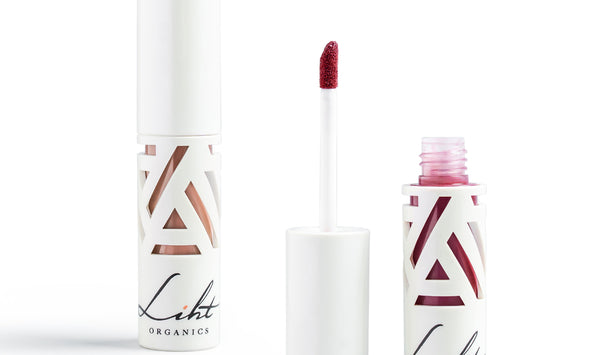
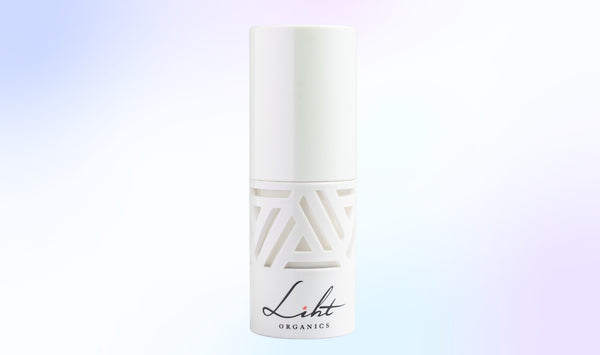

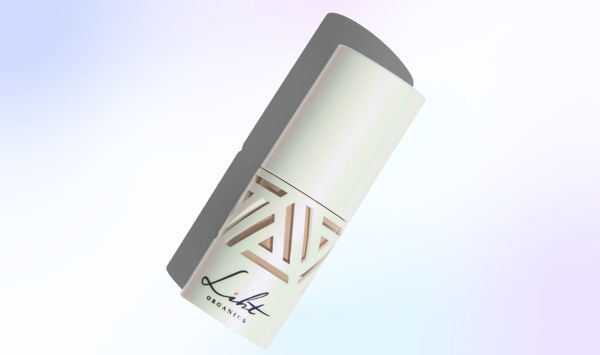
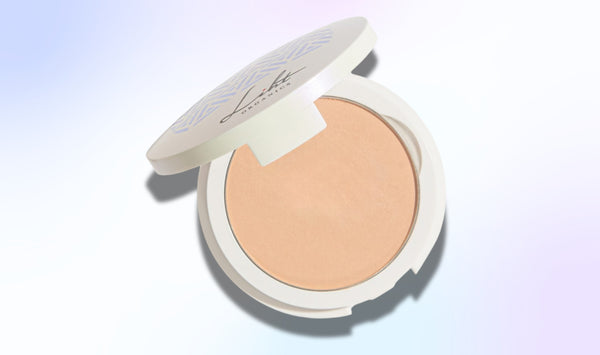
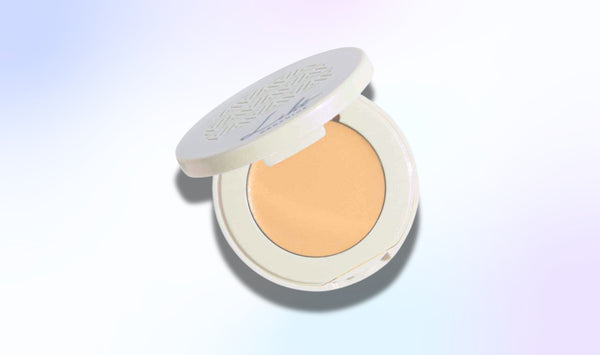
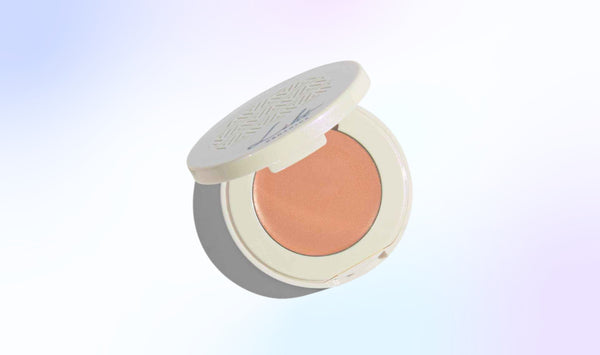
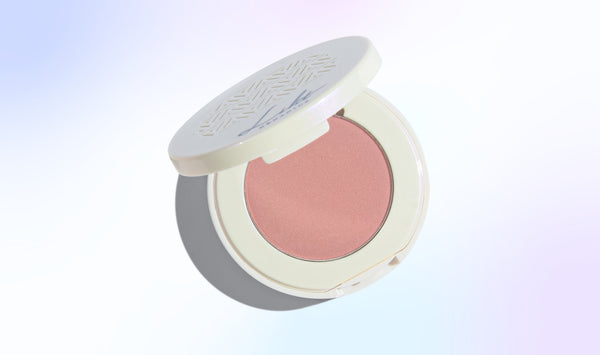
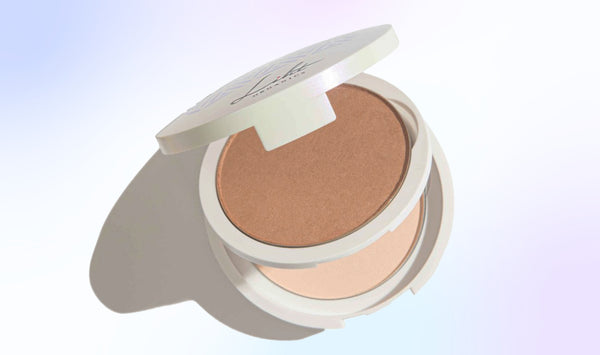
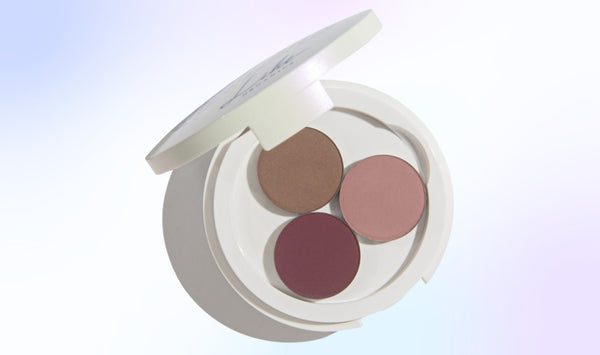
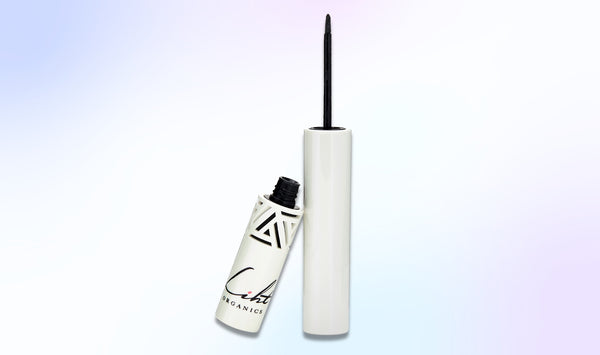
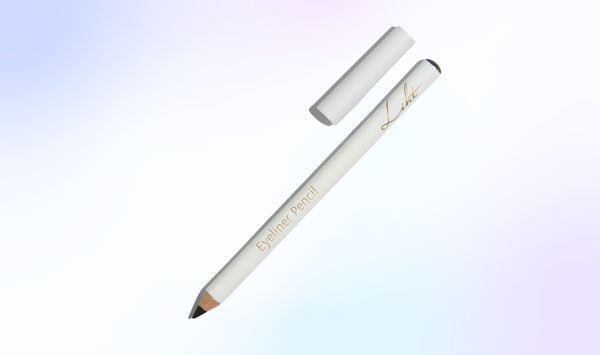
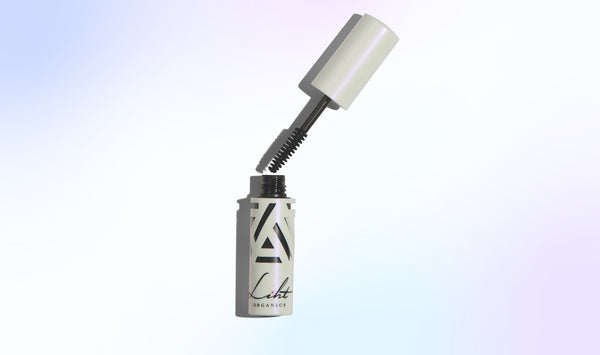
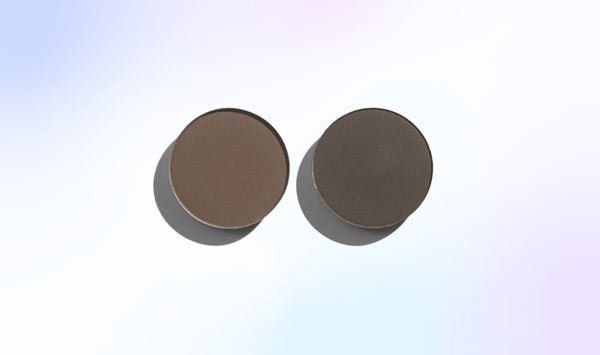
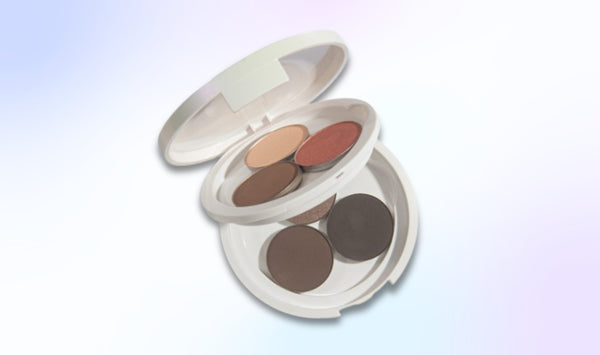
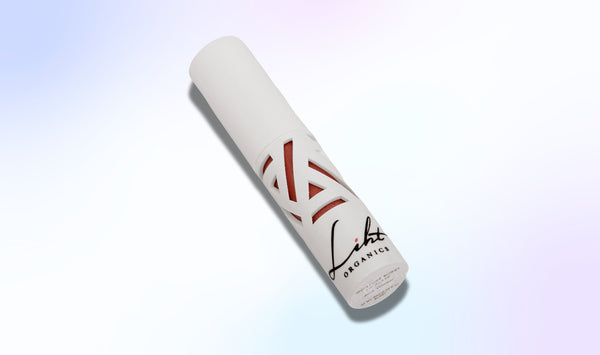
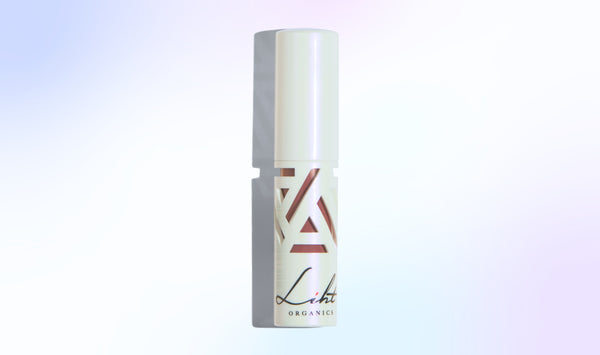
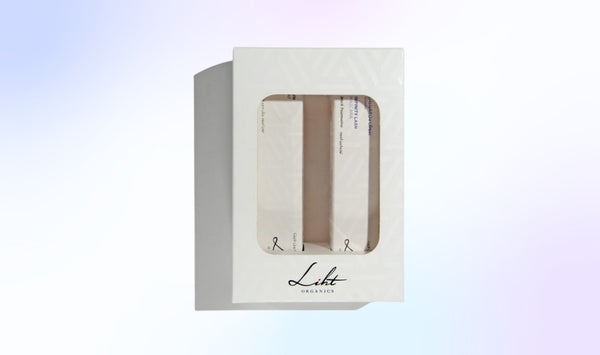
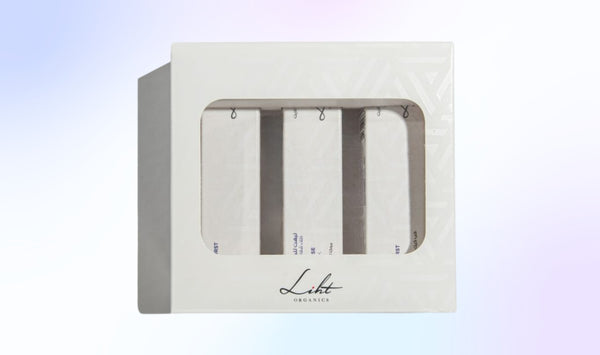


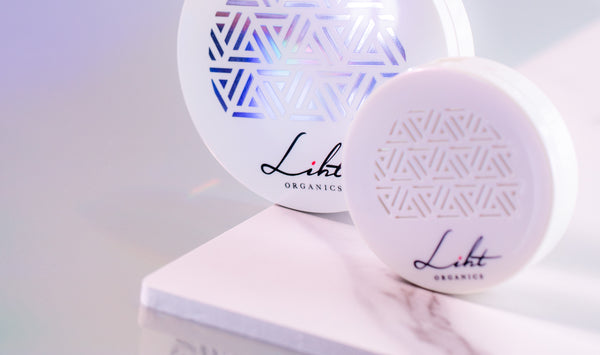
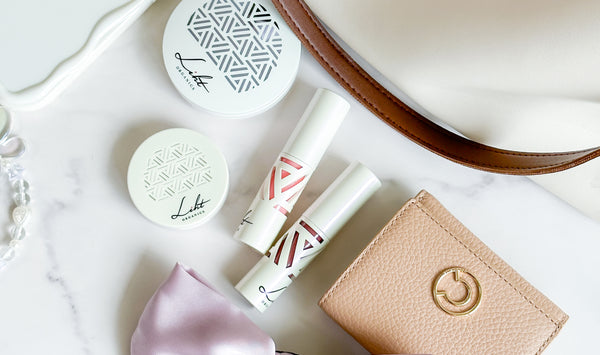
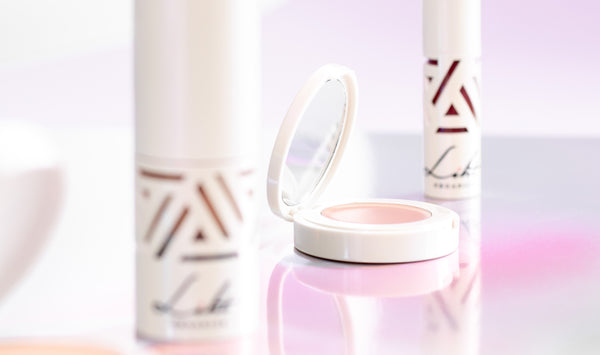




![[FEATURE] Liht Organics to debut at TFWA Asia Pacific show](http://lihtorganics.com/cdn/shop/articles/1_1.png?v=1759328400&width=170)
![[FEATURE] The Singapore-based organic makeup brand is a first-time exhibitor at this year’s TFWA Asia Pacific Exhibition in Singapore in May 2025](http://lihtorganics.com/cdn/shop/articles/2_1.png?v=1759328386&width=170)
![[FEATURE] Travel Retail Awards 2025 finalists - Best Make-up Product Color-Intense Liquid Lipstick – Liht Organics](http://lihtorganics.com/cdn/shop/articles/4_e2f54f0f-fcd1-46e7-9990-fc9d29e35131.png?v=1759328382&width=170)
![[FEATURE] Liht Organics targets expansion in travel retail](http://lihtorganics.com/cdn/shop/articles/3_1.png?v=1759328346&width=170)
































































